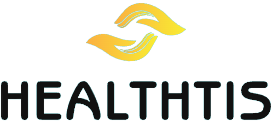Acne – Causes, Symptoms and Treatments!
Acne – Causes, Symptoms and Treatments that we should know, therefore. In addition, Acne is a disease characterized by the appearance of lesions on the skin as a result of folliculitis, an inflammation and subsequent infection of the follicular pore (outgoing hair). These lesions are typically pimples , blackheads and inflamed and red patches like cysts.
This disorder can have psychological and social implications, especially among teenagers and people who work with the public who sometimes have problems in their workplace because they don’t achieve the required degree of physical presence.
News of the week:
However, Acne appears in most cases during adolescence, which affects around 80 percent of this population group. It arises due to the interaction between hormones, sebum and bacteria that live on or inside the skin and also on the hair .
During puberty, which increases the activity of the sebaceous glands and often dries up sebum, scaly debris and bacteria build up in the pores of the skin , forming a comedo, which prevents the flow of sebum from the hair follicles through the pores. If the clasp is incomplete black dots are formed; if it is complete, white spots appear.
In addition, there are some special forms of acne that can affect neonates or adults exposed to certain industrial products (occupational acne) or people who take certain medications, such as oral corticosteroids (drug-induced acne), these clinical forms being less frequent than acne. youth classics.
Causes: The causes are the most varied and the first step to be taken is to make an appointment with a dermatologist. With several tests and some basic information about family history, eating habits, among others, the causes can be detected.
A simple cream, hormonal deficiencies and hereditary factors can cause Acne problem .
Check out:
- Hereditary Factors: There are entire families of acne sufferers. In these cases, from the age of 10, it is possible to predict the appearance of Acne .
- Hormonal Imbalance: It is during puberty that adolescents have their sex hormones stimulated and with the activation of male hormones there is a reaction in the sebaceous glands, leading to the appearance of Acne .
- Ovaries: Occurs in women with a dysfunction that does not transform the male hormone (androgen) into female (estrogen).
In addition, these patients in addition to Acne may have obesity problems , increased hair and menstrual irregularities.
- Use of Cosmetics: Greasy or oily products (such as foundations and moisturizing creams, for example) can bring acne even to those who have never had this type of disease, not even in adolescence.
- Medications: Medications such as cortisone, barbiturates, iodine or bromine based syrups can have side effects and form Acne . If use is essential, a parallel dermatological treatment is recommended.
Symptoms: The most frequent form is juvenile acne that affects about 80% of teenagers. It is characterized, in most cases, by open comedones (blackheads with black dots in the center) or closed (smallreddish or whitish pimples ), present on the skin .
You should know that open pores are black because of the oxidation on the surface of sebum lipids. In case of Acne , the skin can become oily, but this is not a rule for all types of acne. Other forms of acne are:
- Papules: These are small, red, swollen lesions present in the hair follicles. They can be red and soft.
- Pustules: These are red, tender lesions with the presence of pus.
- Nodules: These appear as large, solid, painful lesions under the surface of the skin . Nodules are formed by the accumulation of secretions at the bottom of hair follicles. Nodules can affect teenagers with severe acne (acne grade IV), for example in the form of acne called acne conglobata. These nodules can generate scars.
- Cysts: These are very painful lesions, with nodules below the surface of the skin . Cysts can cause scarring of the skin . They are filled with pus. Body parts affected by Acne.
- Where is Acne Located? Pimples are usually located on the face, back, chest, neck, shoulders or chest. These areas have a high concentration of sebaceous glands.
Treatments: Treatment to reduce the production of oil in the skin , accelerate cell renewal, fight bacterial infection and reduce inflammation. In some cases, the skin may get worse before it gets better.
The dermatologist may recommend a topical medication, to apply to the skin , or oral medications such as Azithromycin and Roaccutane. Oral Acne Medications should not be used during pregnancy, especially during the first trimester.
Acne Treatment Includes:
- Over-the-counter topical creams.
- Topical creams available by prescription.
- Antibiotics, which can be combined with other topical or oral products.
- Oral contraceptives.
- Oral isotretinoin.
- Cosmetic procedures such as chemical peeling and microdermabrasion, lasers, pulsed light.
Useful links:
It is possible to use certain procedures to reduce the scars left by acne. Look:
- Facial filler with hyaluronic acid .
- Chemical peels.
- Dermabrasion.
- Microdermabrasion.
- Laser and radiofrequency treatments.
- Microsurgery to remove acne scars.
